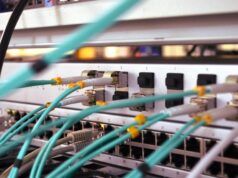LoRaWAN, or Long Range Wide Area Network, has become a powerful wireless communication protocol for IoT applications. Integrating LoRaWAN networks with cloud platforms has become crucial to fully leverage its potential. This integration allows for seamless data transmission, centralized management, and advanced analytics. In this blog, we will explore the benefits of integrating LoRaWAN networks with cloud platforms, with a focus on the roles of LoRa gateway in enabling this integration.
Understanding LoRaWAN and Cloud Platforms
LoRaWAN is a low-power, long-range wireless communication protocol designed for IoT devices. It operates in the sub-GHz frequency bands, following a star-of-stars network architecture. Cloud platforms, on the other hand, provide a scalable infrastructure for data storage, processing, and analysis.
Benefits of Integrating LoRaWAN with Cloud Platforms
Integrating LoRaWAN with cloud platforms offers several advantages:
Centralized Data Management:
Integration enables the aggregation and centralized management of data from multiple gateways and devices. This simplifies data storage, retrieval, and analysis, providing a holistic view of the IoT ecosystem.
Scalable Infrastructure:
Cloud platforms offer scalability to handle large-scale IoT deployments. They can process vast amounts of data, ensuring system efficiency even with a growing number of devices.
Advanced Analytics and Insights:
Cloud platforms provide powerful analytics tools and machine learning capabilities. By leveraging these tools, organizations can extract valuable insights from the collected data, facilitating better decision-making and optimization of IoT processes.
LoRa Gateway Role in Integration
LoRa gateways play a crucial role in integrating LoRaWAN networks with cloud platforms:
Data Forwarding:
LoRa gateways receive data from end devices and transmit it to the cloud platform, ensuring secure and reliable data transmission over the LoRaWAN network.
Protocol Conversion:
Gateways perform protocol conversion tasks, translating LoRaWAN-specific protocols into standard formats compatible with cloud platforms. This enables seamless integration and interoperability within the IoT ecosystem.
Integration Techniques and Protocols
Various techniques and protocols can be employed to integrate LoRaWAN networks with cloud platforms:
MQTT (Message Queuing Telemetry Transport):
MQTT is a lightweight publish-subscribe protocol used in IoT applications. It enables efficient and real-time communication between LoRa gateways and cloud platforms.
RESTful APIs:
RESTful APIs facilitate secure and seamless data exchange between LoRaWAN gateways and cloud platforms. They provide a standardized approach for data transmission and enable integration with various cloud services.
Data Encryption and Security:
Integration requires robust data encryption and security measures to protect sensitive data during transmission and storage.
Conclusion:
Integrating LoRaWAN networks with cloud platforms unlocks the full potential of IoT deployments. It enables centralized data management, advanced analytics, and scalability. LoRa gateways act as the bridge between end devices and the cloud infrastructure, facilitating seamless integration. By leveraging integration techniques and protocols, businesses can create powerful IoT solutions that drive efficiency, improve decision-making, and unlock valuable insights from data.
FAQs:
Q1: What are the advantages of integrating LoRaWAN networks with cloud platforms?
A1: Integrating LoRaWAN with cloud platforms enables centralized data management, scalability, and advanced analytics. It provides a holistic view of the IoT ecosystem, efficient data storage and analysis, and the ability to extract valuable insights for better decision-making.
Q2: What is the role of LoRa gateways in integrating LoRaWAN with cloud platforms?
A2: LoRa gateways serve as the bridge between end devices and the cloud infrastructure. They facilitate secure data transmission, protocol conversion, and enable seamless integration and interoperability within the IoT ecosystem.
Q3: Which integration techniques and protocols are commonly used?
A3: MQTT (Message Queuing Telemetry Transport) and RESTful APIs are commonly used integration techniques. They provide efficient and standardized communication between LoRa gateways and cloud platforms.
Q4: How important is data encryption and security in the integration process?
A4: Data encryption and security are vital in the integration process to protect sensitive data during transmission and storage. Robust security measures ensure the integrity and confidentiality of the data throughout the IoT ecosystem.
Q5: Can integrating LoRaWAN with cloud platforms support scalability?
A5: Yes, integrating LoRaWAN with cloud platforms enables scalability. Cloud platforms offer the infrastructure to handle large-scale IoT deployments and process vast amounts of data efficiently.











